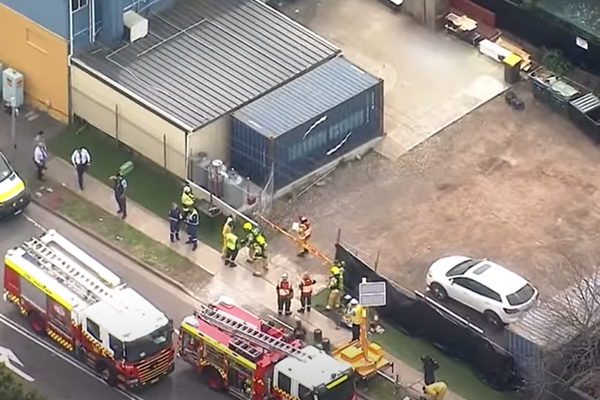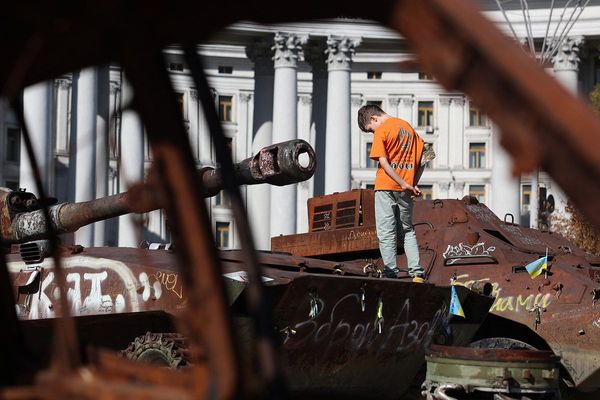Next time you think you lack the resources to pull off a project, think of Maj. Gen. John Pershing. He became one of the most decorated generals in history by winning with less.
Pershing took command of the American Expeditionary Forces (AEF) in May 1917. The task? Join the Allies fighting Germany in World War I. And at the time, the Allied troops were on the verge of defeat.
Talk about scant resources. The U.S. military barely existed a half century after the Civil War. The Army had only 130,000 soldiers, plus a National Guard of 200,000. Few had combat experience. There was no administrative system raising and managing an army. Plus, the U.S. had few airplanes, tanks, machine guns, or artillery ammo. And it lacked the manufacturing capability and ability to deliver arms overseas.
Defy The Odds Like John Pershing
However, through force of will, persistence, organizing skills, and a talent for picking outstanding leaders, Pershing led the AEF to victory in World War I. The officers he picked included George Marshall, Douglas MacArthur, Dwight Eisenhower and George Patton.
At first though, victory for the Allies in was a long shot. But Pershing helped to get materials flowing. By the end of the war in November, 2 million Americans were in the field. They were consuming 45,000 tons of supplies each day.
"General 'Black Jack' Pershing is one of the most overlooked but commendable leaders in U.S. military history," said Andrew Carroll. Carroll is author of "My Fellow Soldiers: General John Pershing and the Americans Who Helped Win the Great War." He is also founding director of the Center for American War Letters at Chapman University.
Pershing: Prepare to Lead Through Education and Experience
Pershing was born on a farm in Laclede, Mo., in 1860. And he learned the importance of diversity early on.
After high school, he taught local Black children and earned a teaching degree. Idolizing Civil War hero and President Ulysses S. Grant, he entered West Point. He graduated in 1886, having shown a talent for leading soldiers. Later, he became a professor of military science at the University of Nebraska, where he also earned a law degree.
Promoted to first lieutenant, he took command of Black troops in the 10th Cavalry Regiment in 1895. This earned him the epithet "Black Jack" when he returned to West Point to teach two years later.
When the war in the Philippines broke out in 1899, Pershing showed his brilliance at both diplomacy and leading military campaigns. He successfully negotiated with the fiercely independent Moro tribes. He rose to brigadier general in 1906 over 862 more senior officers. And he was the military governor of Moro Province until 1913, giving him valuable administrative experience.
Show Faith In Your People
Pershing agreed to President Woodrow Wilson's request to take charge of the AEF. Wilson also pushed arms makers to produce everything needed for the war and ship those arms to Europe.
But Pershing did it his way. Britain and France wanted raw recruits to replace their 10 million casualties, joining an amalgamated force led by their own generals. Despite tremendous pressure, Pershing insisted American soldiers would serve under their own generals. Pershing knew they would fight most heroically alongside their peers.
"Pershing knew that while many of the Americans lacked training and experience, what they did have was optimism and an unconquerable spirit, which he knew that in war counts for a great deal," wrote Jim Lacey, author of "Pershing: Lessons In Leadership." "This was borne out when some of them were trapped behind German lines and they fought like lions; their 'no quarter' attitude making up for a lot of deficiencies."
Take On Rivals With More Resources
Germany had spent four years building seemingly impregnable defenses by the time the Americans got there.
And Germany launched a new type of offensive. That included a massive bombardment that enabled "storm troopers" to get to the rear of Allied lines. At Chemin des Dames in May 2018, the French lost 100,000 men and another 60,000 were taken captive. Still, the Americans found a way to stop the German advance and save Paris.
Unlike many generals, Pershing was open to new ways of doing things. A junior officer, George Marshall, berated Pershing for the Army's lackluster equipment. Often, such criticism would end a military career. But Pershing took the advice of Marshall, who would later become the chief of staff of the Army.
"Unlike many generals, Pershing listened to those who contradicted him," Carroll said.
And if officers made mistakes, Pershing helped them. After the war, he saved a young major, Dwight Eisenhower, from being discharged for making a serious bookkeeping error.
Learn From Your Mistakes Like Pershing
In September 1918, Pershing took on another seemingly impossible task: push out German forces from the St. Mihiel area in France. Booby traps and heavy defenses protected the area. He was then to march 60 miles north to make a second attack in the region of the Meuse River. The nearly impenetrable Argonne Forest surrounded the river. Normally, a single offensive would take Allied leaders two months just to plan. Many doubted this task could be done.
"For the first time, Pershing had commanders in whom he had complete confidence," said Lacey. "They were men in his mold — fearless and hard-driving, who would stop at nothing to achieve their objectives."
Germany suffered 10,000 losses and 16,000 prisoners from the St. Mihiel advance.
Like Pershing, Don't Back Down
The Meusse-Argonne terrain and fortifications were formidable. Pershing threw 600,000 of his men into the attack. But a lack of trucks and even horses hindered their progress. And they had only a handful of tanks. By October 19, the Americans had made little headway, while losing 100,000 soldiers and the Allies 250,000.
"Pershing realized his current methods were not working and ordered a halt to operations for a reorganization and retraining," wrote Lacey. "By the end of October, the Army was retrained in the use of artillery to support an attack and techniques for overcoming strong points or bypassing them. Pershing spent his time overseeing the building of roads, the laying of rail lines, and the stockpiling of material."
When he gave the command to attack, the Allies completely broke the German lines. But "the 47-day battle involving 1.2 million Americans had cost half of the entire war's 53,400 U.S. combat deaths," noted Carroll.
On the eleventh hour of the eleventh day in the eleventh month an armistice went into effect and the guns fell silent. Pershing, with foresight, thought it was a mistake not to demand unconditional surrender, lest Germany eventually rebuild its military.
Leave A Legacy By Training Leaders For Future Challenges
In 1919, the title of General of the Armies of the United States went to Pershing. He unofficially took the equivalent of a sixth star, the highest possible rank in the military.
From 1921 to 1924, Pershing served as chief of staff of the Army. At that time, Congress reduced the Army to 100,000 soldiers. The drawdown happened despite Pershing's warnings about the need to remain prepared. He focused on modernizing the education system to prepare leaders to fight wars of the future.
In the 1930s, he raised alarms about Adolf Hitler. But those warnings were ignored. Fortunately, his reforms and the leaders he mentored enabled the U.S. to respond to the attack on Pearl Harbor in December 1941 with counterattacks against both Imperial Japan and Nazi Germany within 18 months. It had taken nearly that long after America's declaration of war in 1917 to have its soldiers engage in their first major infantry battle.
Pershing died in 1948. His body lies at Arlington National Cemetery next to the troops he served with during the Great War. At his request, his grave has the same simple marker as his troops.
John Pershing's Keys
- Commanding general of American forces during World War I.
- Overcame: Many obstacles to creating the largest army in U.S. history and preparing it for battle.
- Lesson: "To get the best out of your men, they must feel that you are their real leader and must know that they can depend upon you."







